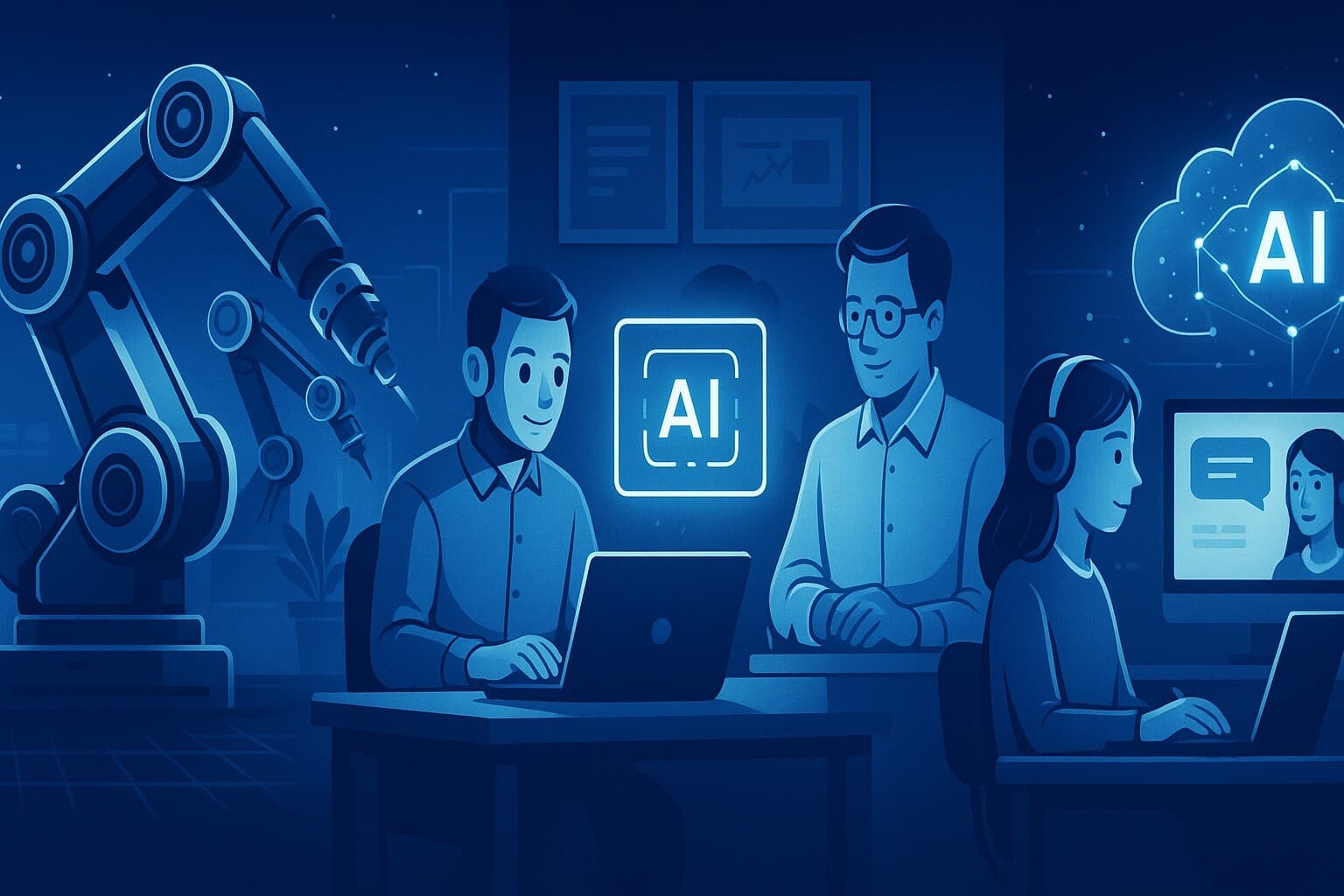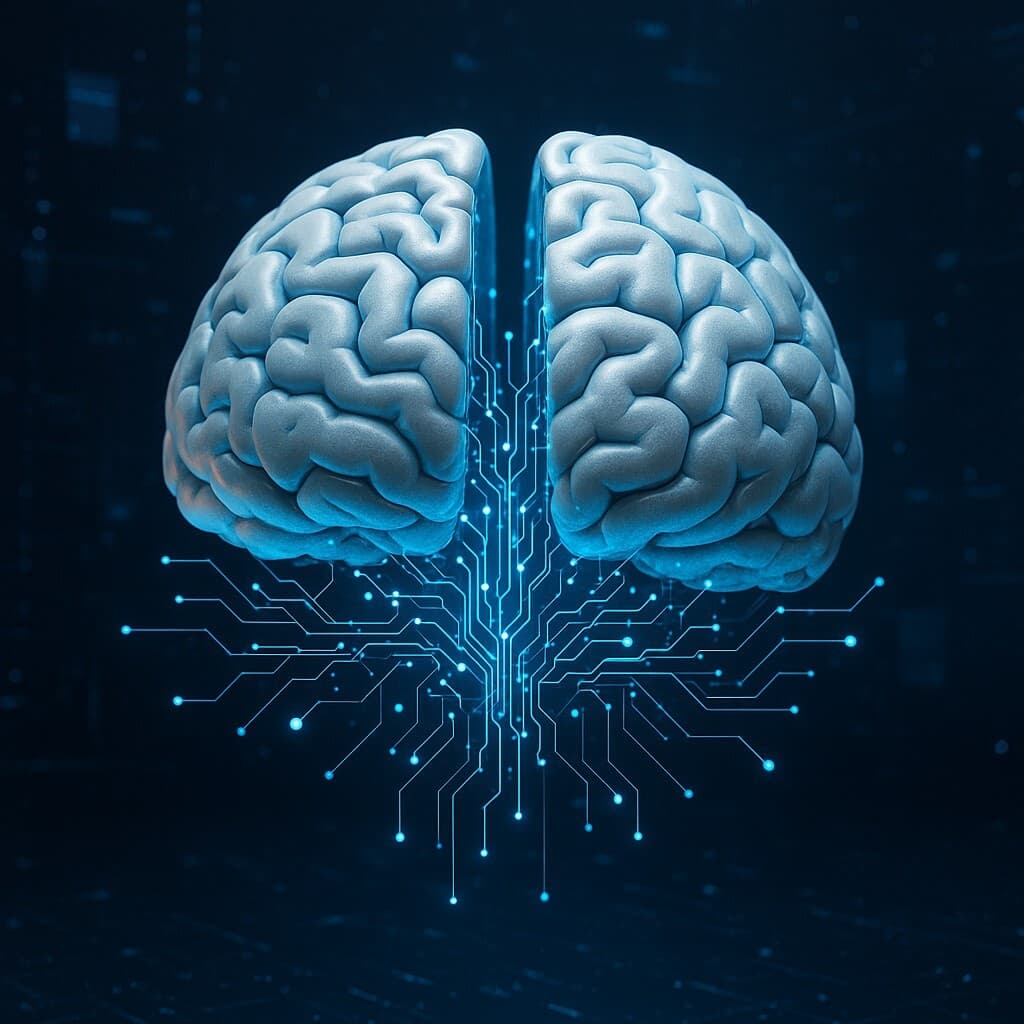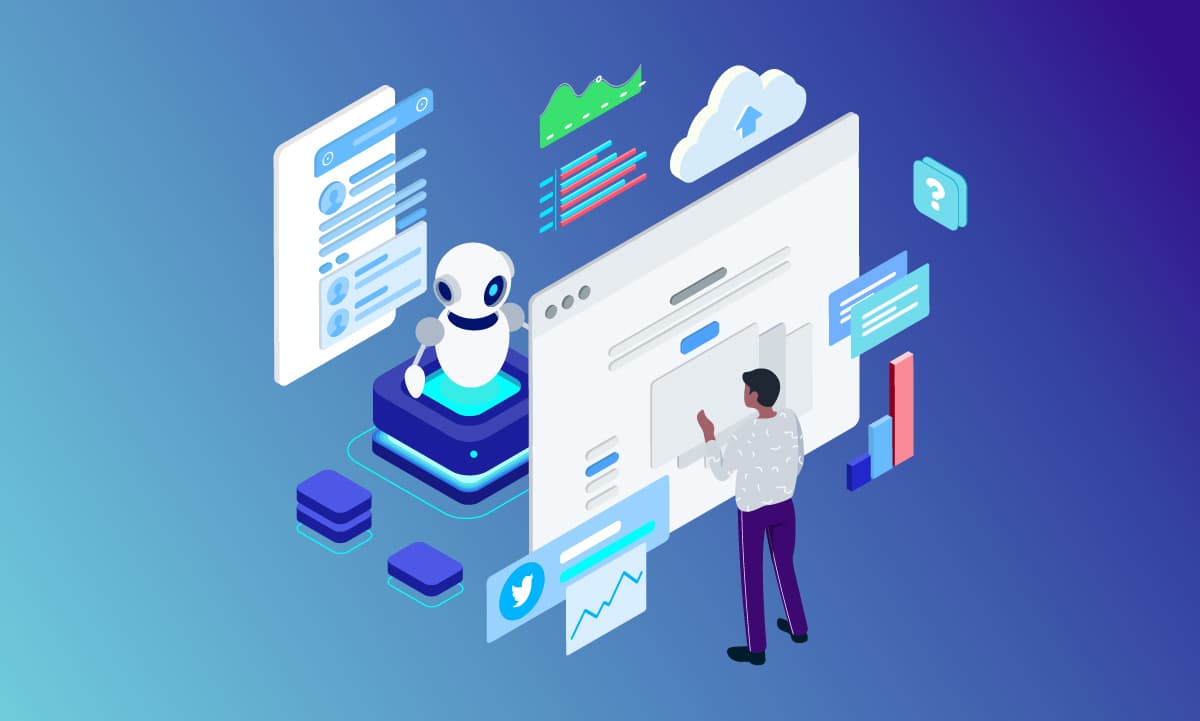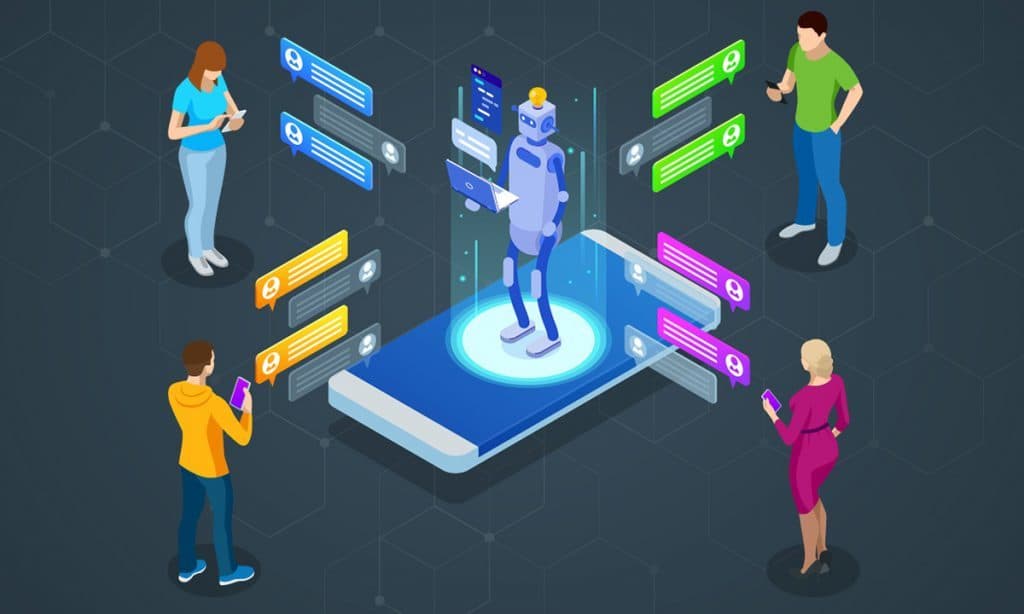Artificial Intelligence
By: Bryan Reynolds | 13 June, 2025

Google Gemini Advanced is Google’s premium AI platform offering access to its most powerful models, including the multimodal Gemini 2.5 Pro, which handles text, images, audio, video, and code with unprecedented scale and reasoning ability. Positioned through the Google One AI Premium plan, Gemini integrates deeply with Workspace, offers models optimized for speed (Flash) and depth (Pro), supports advanced features like Deep Research and personalized memory, and powers emerging content creation tools like Veo 2 for AI-generated video. Despite competition from OpenAI and Anthropic, Gemini's strategic roadmap, enterprise focus, and upcoming Apple integration place it as a serious contender in the evolving AI landscape.
Read MoreBy: Bryan Reynolds | 12 June, 2025

This comprehensive guide provides actionable strategies to help users unlock the full potential of ChatGPT. It emphasizes foundational techniques like crafting clear prompts and providing context, progresses into iterative refinement through follow-up questions and conversational flow, and explores advanced methods such as using personas, examples, and task decomposition. The article also covers responsible use, including fact-checking and bias awareness, and encourages users to continually adapt by building prompt libraries and staying updated on new features. With this guide, users can transform ChatGPT into a collaborative, efficient, and powerful tool for diverse tasks across industries.
Read MoreBy: Bryan Reynolds | 11 June, 2025

Claude AI, developed by Anthropic, is a family of large language models (LLMs) designed with an emphasis on safety, trustworthiness, and enterprise-grade performance. Built using the Constitutional AI training methodology, Claude aims to be helpful, harmless, and honest by design, distinguishing itself from competitors like ChatGPT and Gemini. With models like Haiku, Sonnet, and Opus, Claude excels in tasks involving long context analysis, complex reasoning, and coding, supported by a massive 200,000-token context window and strong accuracy. It’s ideal for high-trust industries and businesses focused on AI safety, privacy, and scalability, with applications across customer service, content creation, legal review, finance, and software development. Though it has a smaller market share, Claude is rapidly growing due to strategic cloud partnerships, a clear enterprise focus, and strong user feedback.
Read MoreBy: Bryan Reynolds | 09 June, 2025

This comprehensive analysis explores Workato, a leading enterprise automation and iPaaS (Integration Platform as a Service) solution, examining its capabilities, architectural advantages, and role in data integration. The report compares Workato with Boomi and ServiceNow, highlighting its strengths in ease of use, cloud-native design, robust security, and integrated AI features. Workato supports ETL, ELT, and Reverse ETL workflows, positioning it as a powerful tool for both application and data integration. Its low-code approach empowers both IT and business users, while its flexibility allows organizations to streamline operations, eliminate silos, and activate data-driven automation across the enterprise.
Read MoreBy: Bryan Reynolds | 06 June, 2025

Google NotebookLM is an AI-powered research and writing assistant designed to work strictly within the scope of user-provided documents, making it ideal for source-grounded analysis and knowledge synthesis. Unlike general-purpose AI like ChatGPT, NotebookLM emphasizes document fidelity, offering features like inline citations, summarization, structured content generation (FAQs, timelines, mind maps), and even Audio Overviews in multiple languages. With a tiered pricing model (Free, Plus, Enterprise), it serves individuals, teams, and large organizations aiming to unlock the value embedded in their internal documentation for tasks such as training, compliance, sales enablement, or strategic planning.
Read MoreBy: Bryan Reynolds | 05 June, 2025

Stable Diffusion is a cutting-edge generative AI model that allows businesses to create high-quality, customizable images from text prompts or existing visuals, offering significant cost savings, faster production timelines, and creative flexibility. Designed for accessibility, it runs efficiently on consumer-grade hardware and can be used through local installations, web platforms, cloud compute services, or APIs. Beyond image generation, it supports editing, animation, and fine-tuning for brand alignment. While the technology provides powerful advantages across marketing, design, e-commerce, and content creation, it also requires careful attention to licensing, ethical concerns, and copyright risks. This guide empowers business owners with the insights needed for strategic adoption and responsible use.
Read MoreBy: Bryan Reynolds | 04 June, 2025

This in-depth guide is a strategic resource for non-technical business leaders aiming to understand and adopt artificial intelligence (AI) effectively. It demystifies core AI concepts—like supervised, unsupervised, semi-supervised, and reinforcement learning—before diving into advanced models including CNNs, Transformers, Generative AI, and Large Language Models. The article maps these technologies to real-world business use cases across industries like retail, healthcare, finance, and manufacturing, and provides a clear framework for selecting the right approach, ensuring data readiness, evaluating infrastructure, and managing talent and risk. The guide emphasizes responsible AI adoption and offers practical steps for aligning technology with business goals to drive innovation and competitive advantage.
Read MoreBy: Bryan Reynolds | 03 June, 2025

This in-depth article explores the evolving intersection of Artificial Intelligence (AI) and software development, highlighting how AI technologies—especially Generative AI, Machine Learning, and Natural Language Processing—are transforming every stage of the Software Development Lifecycle (SDLC). While AI significantly accelerates development, automates tasks, and enhances productivity, it also introduces new challenges related to code quality, security, transparency, and technical debt. The report outlines how the developer role is shifting toward orchestration and oversight, emphasizes the need for strategic planning, governance, and cultural adaptation, and provides practical guidance on AI integration, tooling choices, and success metrics. Ultimately, it positions the future of software development as a symbiotic relationship between human expertise and intelligent machines.
Read MoreBy: Bryan Reynolds | 30 May, 2025

Surfer SEO is a cloud-based content optimization platform designed to improve search engine rankings by analyzing top-ranking competitor pages and providing data-driven recommendations. It offers tools like the Content Editor, SERP Analyzer, Content Audit, and Topical Map for planning and optimizing SEO content. With strong AI integration—including Surfer AI Writer, Auto-Optimize, and NLP analysis—Surfer streamlines content workflows while enabling collaboration across teams. Despite its strengths in usability, collaboration features, and real-time optimization, it faces criticism for promoting over-optimization, content unnaturalness, and reliance on correlation-based metrics. Ideal for experienced SEO professionals and agencies, Surfer SEO is most effective when used critically and strategically rather than blindly following its scoring system.
Read MoreBy: Bryan Reynolds | 29 May, 2025

In 2025, artificial intelligence (AI) has evolved into a transformative force driving innovation, efficiency, and personalization across industries. This comprehensive report maps the current AI landscape, exploring top tools by category—from text generation and visual creation to workflow automation and marketing enablement—highlighting their strengths, use cases, and limitations. It outlines the booming global AI market, powered by increased investment and widespread adoption, and provides a strategic framework for selecting AI tools based on business needs, scalability, integration, and ethics. As the AI frontier continues to expand, the article emphasizes that success lies not merely in adopting AI tools, but in integrating them intelligently into workflows to amplify human potential and achieve sustainable growth.
Read MoreBy: Bryan Reynolds | 27 May, 2025

The AI landscape in 2025 marks a pivotal shift from hype to high-impact integration, with rapid performance leaps, efficiency gains, and unprecedented enterprise adoption. AI models are not only becoming dramatically more capable—excelling in benchmarks and multimodal understanding—but also vastly more accessible through efficient small language models and falling inference costs. Open-source innovation is surging alongside proprietary advancements, democratizing deployment while foundational model development remains capital-intensive and centralized. Businesses are widely adopting AI, yet struggle with deep transformation needed for maximum ROI. Meanwhile, agentic and multimodal systems promise the next frontier of automation and interaction, all unfolding amid urgent calls for responsible AI governance and rising global competition, especially between the U.S. and China.
Read MoreBy: Bryan Reynolds | 26 May, 2025

Replit is an AI-powered, cloud-based development platform designed to democratize software creation by offering an accessible, all-in-one coding environment that supports over 50 programming languages, real-time collaboration, seamless deployment, and integrated AI assistance. With tools like the Replit Agent for app generation and the Replit Assistant for in-editor support, the platform enables rapid prototyping and empowers both technical and non-technical users to build and deploy applications directly from a browser. While ideal for learners, educators, SMBs, and internal tool developers, its performance and flexibility may fall short for enterprise-grade, mission-critical workloads. Its hybrid pricing model combines free access, subscriptions, and usage-based billing, and it emphasizes security through GCP infrastructure and SOC 2 compliance.
Read MoreBy: Bryan Reynolds | 23 May, 2025

Manus AI, developed by Monica.im, is a groundbreaking autonomous AI agent designed to bridge the gap between human intention and execution by autonomously completing complex, multi-step tasks across various domains. Unlike traditional conversational AIs, Manus AI functions as a “digital employee,” planning, executing, and delivering results independently. It supports a wide range of knowledge work—from research and data visualization to content creation and software development—while offering transparency through its “Manus’s Computer” interface. Currently in invite-only beta, it boasts high performance on benchmarks like GAIA but faces challenges in reliability, enterprise security, and scalability. Despite these hurdles, it holds disruptive potential in reshaping how professionals and businesses approach automation.
Read MoreBy: Bryan Reynolds | 22 May, 2025

Loveable AI is an AI-powered development platform that converts natural language prompts into full-stack web applications, enabling rapid prototyping, MVP creation, and frontend scaffolding. It combines accessibility for non-coders with developer-friendly features like GitHub integration and Supabase-backed backend generation. While its strengths lie in speed, usability, and end-to-end app generation, it faces limitations due to a credit-based pricing model and serious security vulnerabilities, particularly the 2025 "VibeScamming" exploit that exposed its potential misuse for phishing. Loveable AI is best suited for startups, solo developers, and early-stage projects that can tolerate usage-based pricing and have low security sensitivity.
Read MoreBy: Bryan Reynolds | 02 May, 2025

This comprehensive report examines the rise of low-code development platforms in the digital landscape, analyzing their significant benefits alongside inherent limitations that organizations eventually encounter. While these platforms offer accelerated development and empower non-technical users, they face challenges in scalability, customization, vendor lock-in, integration with legacy systems, security vulnerabilities, and performance bottlenecks as applications grow more complex. The analysis identifies scenarios where low-code approaches fall short, explores future trends including AI integration and enterprise-grade capabilities, compares leading platforms, investigates common reasons for project failure, and provides strategic recommendations for successful implementation. With the global low-code market projected to reach $187 billion by 2030, organizations must carefully navigate these platforms' strengths and limitations through strategic planning, hybrid development approaches, robust governance frameworks, and prioritization of security and scalability to harness their potential while effectively mitigating associated risks.
Read MoreBy: Bryan Reynolds | 29 April, 2025

AI hallucinations—instances where large language models (LLMs) confidently produce false or misleading information—pose serious risks in finance, where factual precision is crucial. This article examines how hallucinations manifest in financial contexts, such as fabricated metrics, regulatory misstatements, and invented stock prices, leading to business risks like misinformed decision-making, compliance violations, financial losses, trust erosion, and litigation. Ethical issues, including privacy breaches, algorithmic bias, and lack of explainability, further complicate AI's role in finance. Practical solutions, such as domain-specific fine-tuning, retrieval-augmented generation (RAG), advanced prompting, guardrails, cross-verification, and continuous monitoring, are critical to minimizing hallucinations and ensuring AI systems operate ethically, accurately, and reliably.
Read MoreBy: Bryan Reynolds | 23 April, 2025

The blog explores v0.dev, Vercel's AI-powered UI generation tool, and how it transforms frontend development for businesses. It explains how v0.dev uses natural language prompts to produce production-ready React and Tailwind CSS code, helping teams rapidly prototype, streamline design-to-code workflows, and reduce engineering overhead. Key business benefits include faster MVP delivery, internal tool development without frontend expertise, UI consistency across products, and cost savings. The article also outlines pricing options and emphasizes v0.dev's potential as a strategic advantage in modern software development.
Read MoreBy: Jeff Skvorc | 14 November, 2024

Discover practical ways businesses can integrate AI into daily operations to boost efficiency, enhance decision-making, and streamline tasks across departments, while addressing both the benefits and challenges of AI implementation.
Read MoreBy: Bryan Reynolds | 29 September, 2024

Artificial intelligence continues to change the way businesses operate, and this gradual transformation is full of many opportunities as well as many challenges. As with any new technology, there is risk involved, both in being too far out on the bleeding edge and in being the last holdout among competitors to adopt a superior innovation. It’s important to have a working understanding of both the opportunities and the challenges that today’s businesses are facing.
Read MoreBy: Bryan Reynolds | 28 September, 2024

Artificial intelligence (AI) is all the rage in the business and tech communities these days. Everywhere you look, you find blogs, articles and reports that prattle on about “leveraging the power of AI to” do just about anything. Unfortunately, real understanding about what AI is and what it can do today seems to be quite thin. It’s become a marketing buzzword more than a functional description in far too many places.
Read MoreBy: Bryan Reynolds | 18 July, 2024

The article explores the evolution of AI chatbots, with a focus on OpenAI's ChatGPT. ChatGPT, based on GPT-3, offers versatile applications ranging from customer service to software engineering. Market projections anticipate significant growth in AI software, particularly in chatbots utilizing natural language processing. Despite its potential, chatbots pose risks like providing inaccurate information, necessitating robust data governance policies. The competition between ChatGPT and Google's Bard underscores the dynamic landscape. Microsoft's substantial investment in OpenAI for ChatGPT development, alongside Bing's upgrade to use GPT-4, reflects the intensifying rivalry in AI-based services. Read further to learn about the emergence of AI chatbots, their diverse applications, market prospects, associated risks, and competitive dynamics.
Read MoreBy: Katarina Rudela | 07 July, 2023

Artificial Intelligence (AI) technology is developing rapidly, especially for chatbots. The most advanced examples of this type of software include OpenAI’s Chat Generative Pre-trained Transformer (ChatGPT) and Google’s Bard, although they differ greatly in their approaches to making chatbots sound more human. These two solutions are shaping up to be direct competitors in this sector, and the winner is likely to determine the course of advancement in this area for the foreseeable future.
Read MoreBy: Katarina Rudela | 02 May, 2023

ChatGPT is a chatbot developed by OpenAI and largely financed by Microsoft. It was launched as a prototype in late 2022 and quickly gained attention for its ability to create detailed, articulate responses to questions in many bodies of knowledge. OpenAI timed the release of ChatGPT to preempt Google’s release of Bard, as industry analysts expect the two chatbots to compete for market dominance in this space.
Read MoreBy: Katarina Rudela | 08 September, 2022

Modern businesses frequently find they need new software to remain competitive, especially in crowded markets driven by rapidly advancing technology. The decision to implement software often comes down to a choice between custom and commercial-off-the-shelf software. Custom software has a higher up-front cost, but its maintenance costs are often lower since it probably won’t require as many changes going forward. Organizations making this decision must also consider the longer implementation time of custom software.
Read MoreBy: Katarina Rudela | 22 December, 2021

AI tools and technologies are having a major impact on numerous areas of the software development process. To learn more about the various ways that AI is poised to empower software developers heading into 2022, be sure to check out our latest blog article.
Read MoreBy: Bryan Reynolds | 23 November, 2019

Artificial intelligence is changing aspects of how business is done today in exciting ways. And the promise of what this technology may be able to do in the future is all the more tantalizing.And it’s true. If you’re a big business, AI is, well, big business. It’s not uncommon to read or hear about the ways AI and machine learning are changing the way data analytics (using “big data”) are done. Many of the other ways that AI is being deployed today are likewise usually discussed in a larger-scale enterprise-type context.
Read MoreBy: Bryan Reynolds | 17 November, 2019

AI is transforming workflows all around us. You may already be using software infused with artificial intelligence in aspects of your business, or maybe you’re looking to start doing so now. Either way, consider the workflow enhancements listed below. Each is powered in some way by artificial intelligence, and each has the potential to improve business outcomes for your company.
Read MoreBy: Bryan Reynolds | 28 September, 2019

Artificial intelligence is beginning to change and improve software development. Over the next decade, we expect this trend to continue as machine learning improves the capabilities of AI-powered systems that help with software development. Read today’s blog post to understand how artificial intelligence is already affecting software development and get a glimpse where things are heading.
Read More

